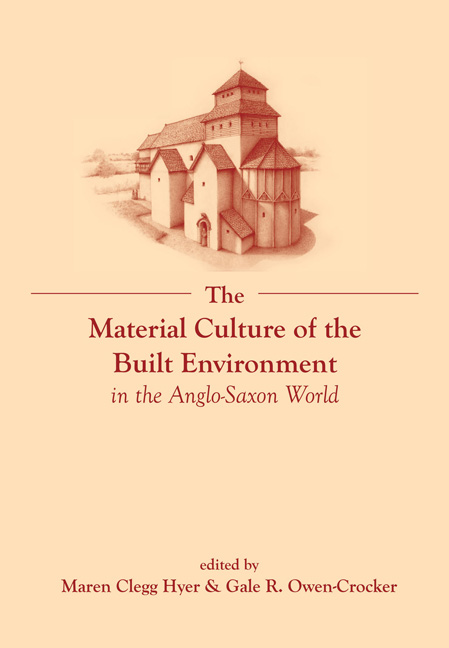Book contents
- Frontmatter
- Dedication
- Contents
- List of Figures
- List of Tables
- List of Contributors
- Introduction
- 1 Enta geweorc: The Ruin and its Contexts Reconsidered
- 2 Roads and Tracks in Anglo-Saxon England
- 3 Domestic Dwellings, Workshops and Working Buildings
- 4 Place and Power: Meetings between Kings in Early Anglo-Saxon England
- 5 The Cuckoo and the Magpie: The Building Culture of the Anglo-Saxon Church
- 6 Landmarks of Faith: Crosses and other Free-standing Stones
- 7 Landmarks of the Dead: Exploring Anglo-Saxon Mortuary Geographies
- 8 Boundaries and Walls
- 9 The Landscape of Late Saxon Burhs and the Politics of Urban Foundation
- 10 Signalling Intent: Beacons, Lookouts and Military Communications
- Notes
- Suggested Reading
- Index
2 - Roads and Tracks in Anglo-Saxon England
- Frontmatter
- Dedication
- Contents
- List of Figures
- List of Tables
- List of Contributors
- Introduction
- 1 Enta geweorc: The Ruin and its Contexts Reconsidered
- 2 Roads and Tracks in Anglo-Saxon England
- 3 Domestic Dwellings, Workshops and Working Buildings
- 4 Place and Power: Meetings between Kings in Early Anglo-Saxon England
- 5 The Cuckoo and the Magpie: The Building Culture of the Anglo-Saxon Church
- 6 Landmarks of Faith: Crosses and other Free-standing Stones
- 7 Landmarks of the Dead: Exploring Anglo-Saxon Mortuary Geographies
- 8 Boundaries and Walls
- 9 The Landscape of Late Saxon Burhs and the Politics of Urban Foundation
- 10 Signalling Intent: Beacons, Lookouts and Military Communications
- Notes
- Suggested Reading
- Index
Summary
Ofereode ta atelinga bearn
steap stanhliđo, stige nearwe,
enge anpađas, uncuđ gelad
So the noble prince proceeded undismayed up fells and screes, along narrow footpaths and ways where they were forced into single file ledges on cliffs above the lairs of water-monsters.
Introduction
Although there is much evidence for the movement of people and goods in Anglo-Saxon England, the detail of the network of roads and tracks remains something of a mystery. The evidence for both Roman roads before, and medieval roads after, the Anglo-Saxon period is much better. It is clear that many Roman roads remained in use, and new tracks came into being which can be seen in the post-Anglo-Saxon period. But the paucity of Anglo-Saxon documentary, cartographic and archaeological evidence leaves sources such as place names and charters, which can be difficult to interpret. It is clear that many of the roads and tracks in use today were created during the period, related to the establishment and growth of villages, burhs and ports, but in most cases putting flesh on the bones is difficult.
The network of roads and tracks during the Anglo-Saxon period is almost impossible to reconstruct, largely because there was apparently no deliberate road construction, and there are few written sources which describe roads. Indeed, most modern books written about the period make little or no mention of roads or communication. One is almost left to agree with G.K. Chesterton that: ‘the rolling English drunkard made the rolling English road. / A reeling road a rolling road that rambles round the shire’. Despite the lack of evidence it is highly likely that the road system of England was largely complete (in terms of the number of roads and connectivity) by the end of the Anglo-Saxon period, although the network continued to evolve for another 700 years in response to changing demand. There were not to be any deliberate alterations or additions to the road network, however, until the turnpikes and enclosure roads in the eighteenth and nineteenth centuries, and new roads such as bypasses and motorways in the twentieth.
Origins
Before the Anglo-Saxon period a road system already existed, perhaps partly created in prehistoric times, and certainly during the Roman occupation (Figure 2.1).
- Type
- Chapter
- Information
- Publisher: Liverpool University PressPrint publication year: 2015



